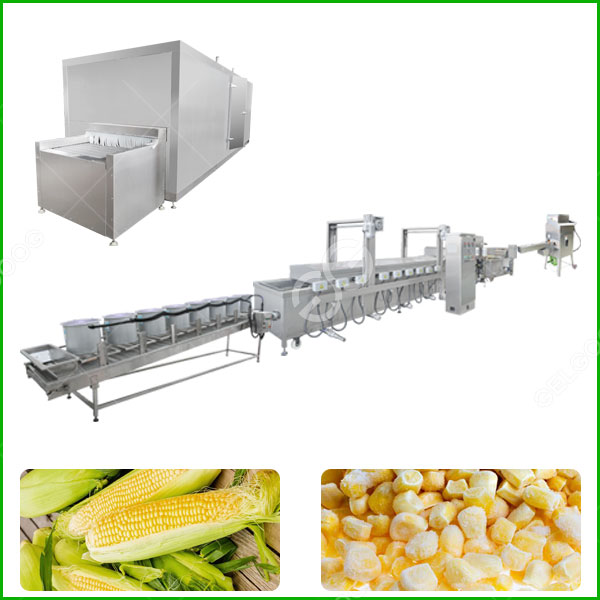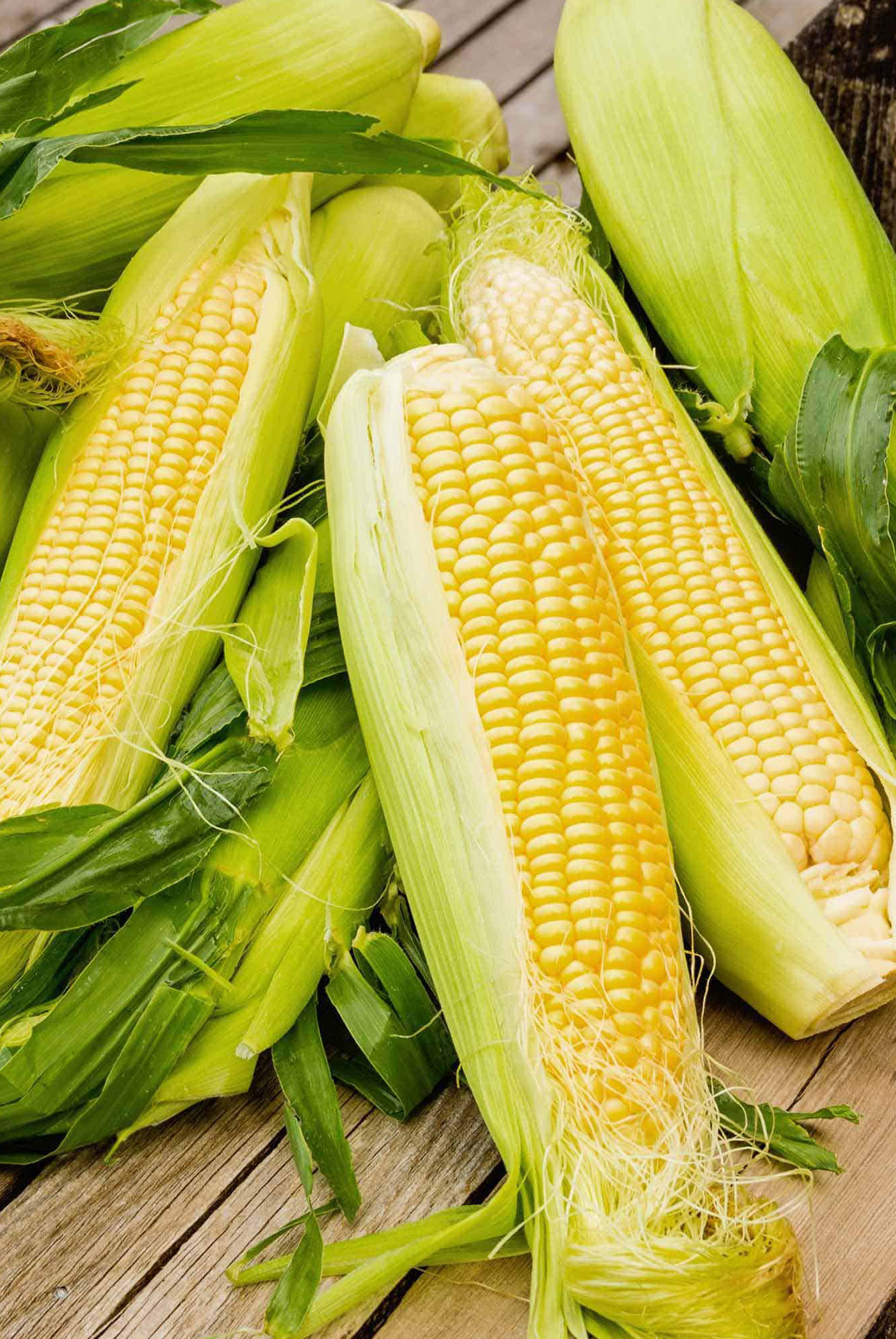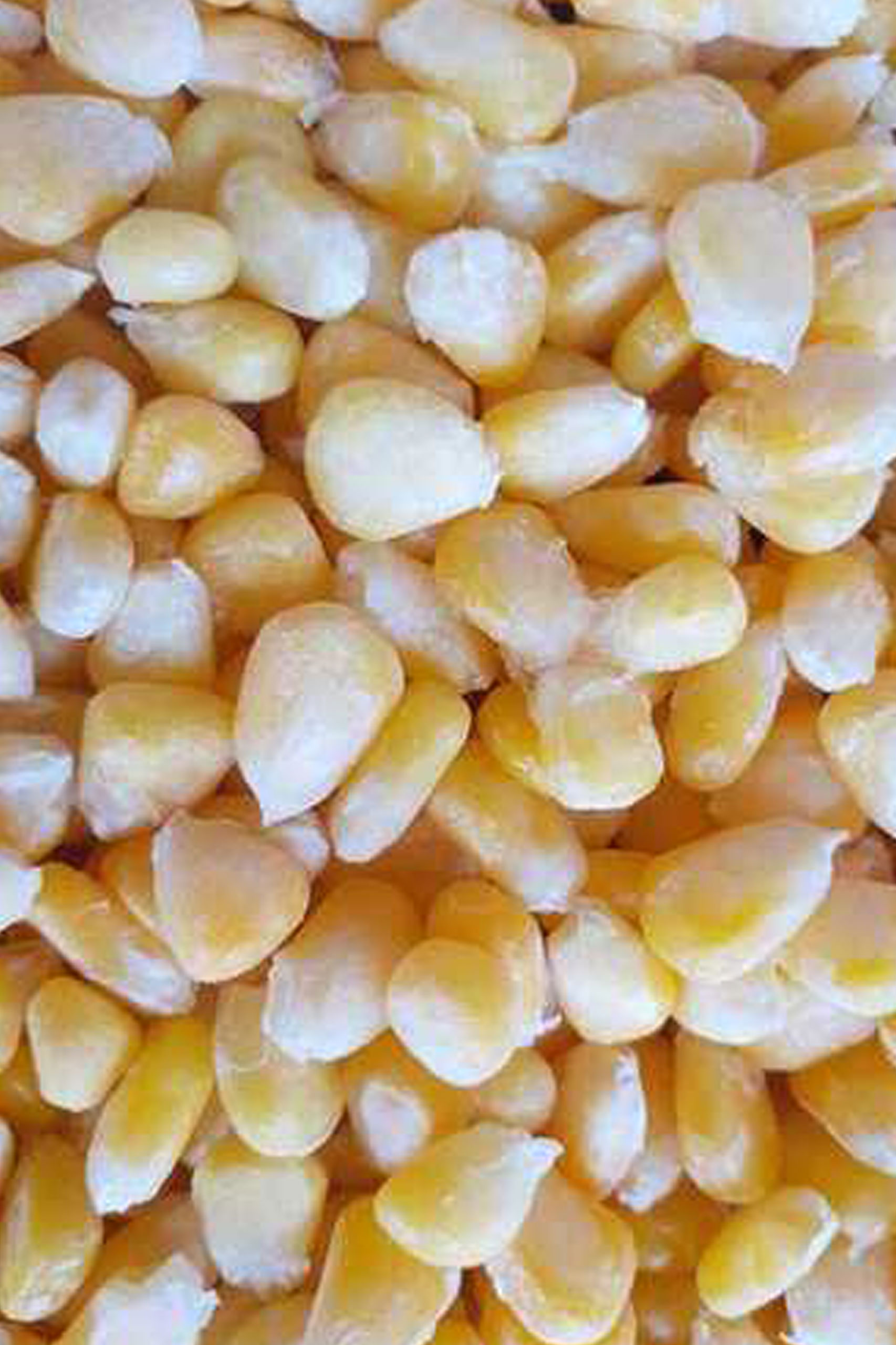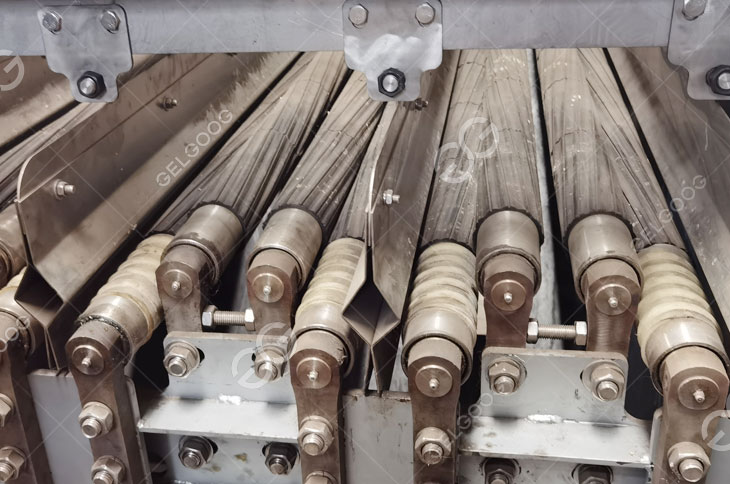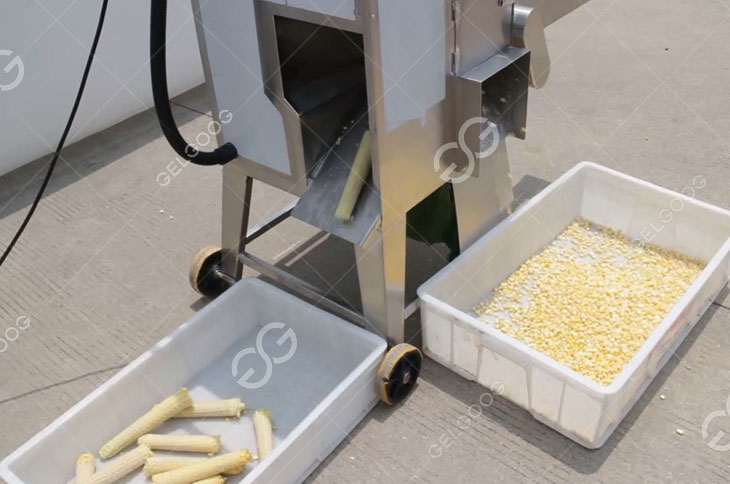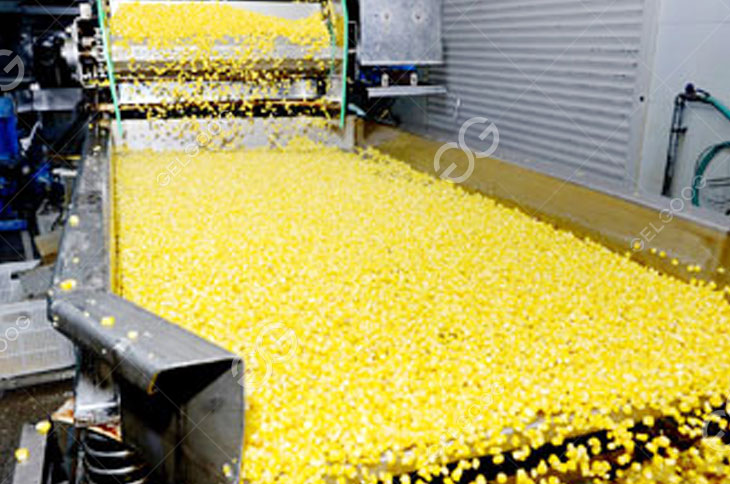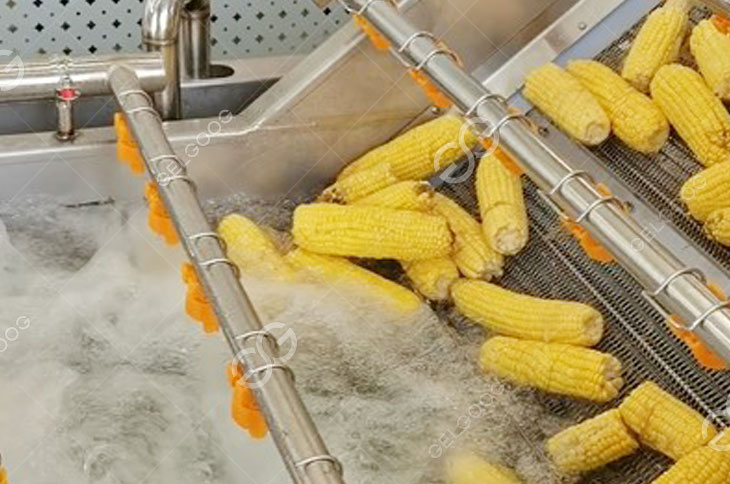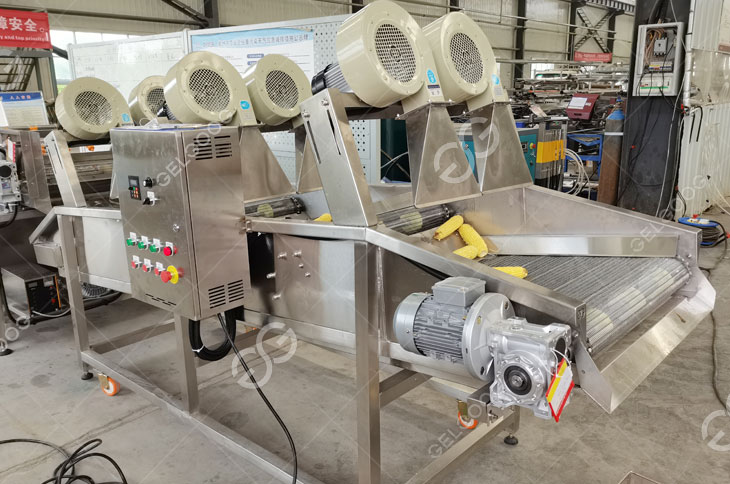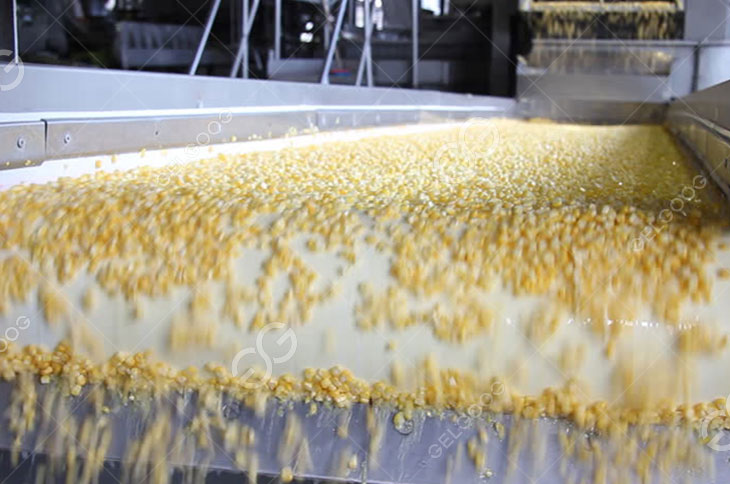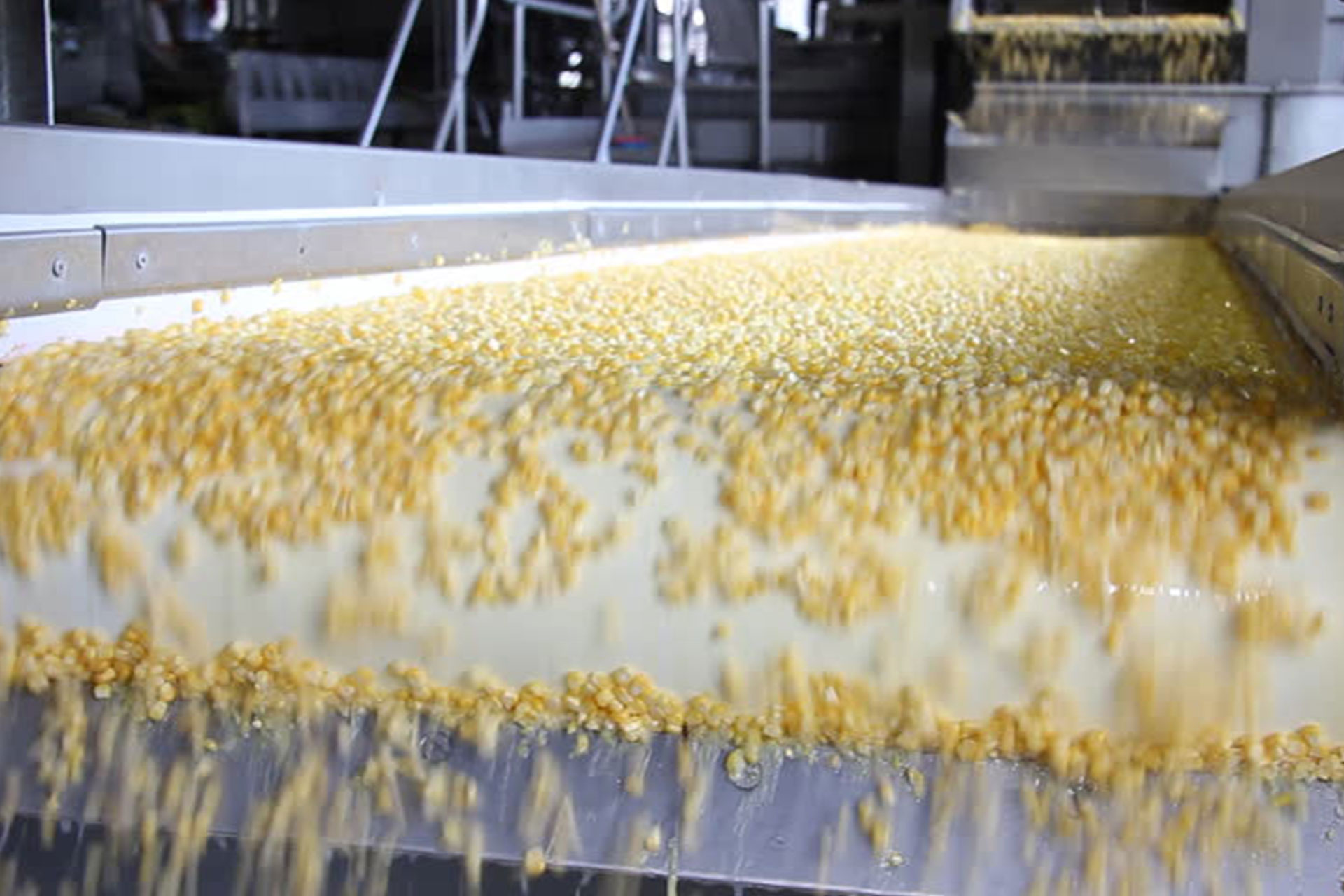Frozen Sweet Corn
Processing Line
Frozen Corn Production Line Advantages
The frozen sweet corn processing line processing technology of corn kernels at least includes basic processes such as pretreatment, blanching, freezing, thawing, etc., to achieve the advantages of simple corn kernel production process, high production efficiency, good food taste and long storage time
Frozen Sweet Corn Processing
Raw material harvesting→acceptance→removal of bracts and filaments→rinsing→threshing→washing→blanching→cooling→selection→quick freezing→screening→packaging→refrigeration
(1) The best harvest period for sweet corn is the milk maturity period, that is, 20 to 22 days after pollination. Generally, the pollination time is calculated when the ear of corn spit out filaments of about 1 inch (3.3 cm). When harvesting, the moisture content of sweet corn should be 70% to 73%. At this time, sweet corn has the best taste and flavor. The harvested corn should not stay and expose to the sun for a long time in the field, and do not squeeze too much during transportation and handling to avoid damage to the sweet corn.
(2) When the raw material is accepted and harvested, the wrapping leaves of sweet corn should be turquoise. The grains are full, the color is yellow or light yellow, the color is uniform, there are no variegated grains, the grain size and grain arrangement are uniform and neat, and the phenomenon of baldness, lack of grains, and insect infestation is not serious.
(3) After peeling and removing filaments, sweet corn should be placed in a cool place and peeled immediately after entering the factory. The time from corn harvesting to processing should not exceed 6 hours. If the corn cannot be processed within 6 hours, it must be stored in a fresh-keeping warehouse at about 0 °C for a short period of time. The corn husks were manually stripped and the corn silk was removed. The ears of corn with the husks removed should be handled gently and placed in the basket.
(4) Trimming, selection, and grading First, the sweet corn ears that are too old, too tender, too moth-eaten, and extremely uneven grains are removed. Use a knife to dig out the moth-eaten and variegated kernels from the sweet corn ears with a few worm-eaten and variegated kernels. Then, according to the diameter of corn, 2 to 3 grades can be formulated according to different corn varieties, and the diameter difference between the grades is set at about 5 mm.
(5) Cleaning and threshing Because quick-frozen sweet corn are no longer thawed and cleaned before eating, they must be cleaned with running water. The threshing is carried out on the corn thresher, and the depth and distance of the thresher knives are graded to prevent corn kernels from being cut too deep or too shallow. If some are cut too deep, the corncob may be cut off, affecting the appearance and taste of the product; if it is cut too shallowly, less grains will be cut, the yield will be low, and the raw materials will be wasted.
(6) blanching blanching is the most critical process in the processing of tender corn, and the blanching temperature and time must be strictly controlled. The functions of blanching are as follows: it can inactivate the enzymes in corn tissue, because low temperature refrigeration will not inactivate the enzymes, and the slow physiological and chemical reactions are still carried out, which destroys the nutrients of the grains; blanching Blanching can also kill some microorganisms and insect eggs to ensure the hygiene and food safety of the product; the air in the blanched corn kernels is partially expelled, reducing the expansion pressure when ice crystals are formed during freezing, and increasing the resistance to expansion pressure. and correspondingly reduce the degree of oxidation of raw materials, and maintain the color and nutrition of products.
For blanching, boiling water or steam can be used, the temperature is 93-100°C, and the blanching time is controlled according to the water temperature, generally 3-8 minutes. If the blanching time is too long, the nutrients will be seriously lost, and the quality indicators such as the color and taste of the finished product will also be greatly reduced. The kernels should be blanched immediately after threshing. Blanching can be carried out in a jacketed pot or in a continuous blanching machine. The method of blanching is to boil the water first, then add the sweet corn/ kernels, and the ratio of water to sweet corn /kernels is 4:1.
(7) Cooling blanched sweet corn / kernels should be cooled immediately, otherwise the residual heat will seriously affect the quality, such as darkening of the color, increased dry consumption, prolonged quick-freezing time and waste of energy, which also provides conditions for the reproduction of microorganisms. Therefore, cooling must be timely and thorough to ensure the color and quality of the product.
In order to save water, stage cooling method can be used. First, use the spray method to reduce the temperature of the sweet corn / kernels at about 90°C to 25-30°C; then soak and cool in ice water at 0-5°C to reduce the temperature of the center of the sweet corn / kernels to below 5°C.
(8) Pick out cobs, filaments, discolored grains and other foreign impurities. In order to ensure product quality, improve productivity and reduce the pressure of screening before packaging, manual selection is carried out on the conveyor belt after cooling to remove over-ripe, under-scalding and broken corn kernels.
(9) Draining Draining can remove the water on the surface of the sweet corn / kernels, prevent the formation of ice cubes and the adhesion between the sweet corn / kernels due to excessive surface water during freezing, which affects the appearance and net weight, and can also reduce the consumption of electricity. Draining can be done on a shaking sieve, but it is dried with cold air, one is to drain thoroughly, and the other is to further cool.
(10) Quick freezing is a decisive factor to ensure product quality. The faster the freezing speed, the better the product quality, whereas the longer the freezing time, the worse the quality. Quick-frozen sweet corn / kernels use a fluidized-bed quick-freezing tunnel. The sweet corn / kernels are laid flat on the conveyor belt, and multiple fans under the conveyor belt blow the cold air from bottom to top at a speed of 6-8 m/s, so that the sweet corn / kernels are suspended, and the temperature of the center of the sweet corn / kernels can reach -18 ℃. . The quick-frozen sweet corn / kernels should not stick to each other and the surface should be frost-free. If the evaporation temperature of the machine is -34 ~ -40 ℃, the cold air temperature is -26 ~ -30 ℃, the thickness of the sweet corn / kernel is 30 ~ 38 mm, freezing for 3 ~ 5 minutes can meet the requirements.
(11) Screening The frozen sweet corn / kernels are further selected, defective kernels and broken kernels are removed, and sieving can be performed if necessary.
(12) Packaging quick-frozen sweet corn / kernels should be packaged at -6°C. Generally packed in polyethylene plastic bags, 250g/bag or 500g/bag as needed. After packaging, seal it, and stamp the production date on the seal, and immediately send it to the refrigerator for refrigeration after packing.
(13) The temperature of the refrigerator should be below -18°C, and the relative humidity should be 95% to 98%. The temperature fluctuation range in the refrigerator should not exceed ±2°C, otherwise, recrystallization and ice sublimation will occur if the temperature fluctuates too much, which will increase the ice crystals inside the corn tissue and damage the cell tissue and affect the product quality. When stacking, there should be enough space between the stacks to facilitate air circulation.
Still Confused About Sweet Corn Processing? Get A Consultation
We can support you the customize frozen sweet corn processing solutions according to your specific request!

